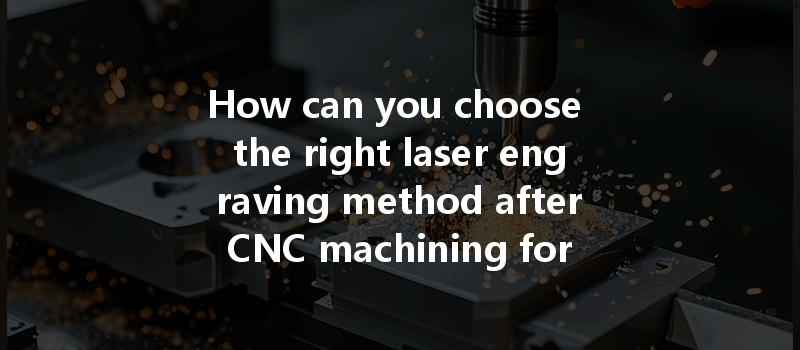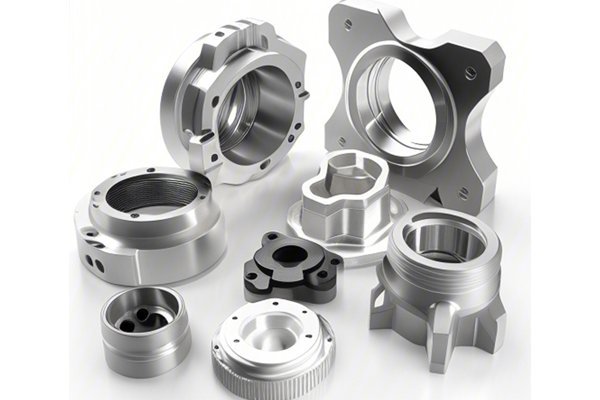Opening
Did you know that nearly 90% of manufacturers that employ CNC machining also utilize laser engraving to enhance product design and branding elements? This is no coincidence; the combination creates a synergy that transforms ordinary products into extraordinary pieces, all while preserving critical dimensions. However, with various laser engraving techniques available, the question arises: how do you select the right method after your CNC machining process?
In this comprehensive guide, we will explore the different types of laser engraving methods, considerations to keep in mind, and how to choose the best technique to match your CNC machined products. Dive in and discover the intricacies of blending these two high-precision technologies in a way that elevates your product offerings.
Understanding Laser Engraving and Its Significance
Laser engraving involves etching designs, text, or patterns onto various materials using focused laser beams. The process offers numerous advantages, including:
When incorporated after CNC machining, laser engraving can enhance surfaces and aesthetics while maintaining the original specifications set during machining.
Types of Laser Engraving Methods
There are several laser engraving methods available, each with unique features and applications. Here are the primary types:
CO2 lasers are highly effective for engraving non-metal materials such as wood, acrylic, glass, and some plastics. They emit a wavelength of 10.6 microns, which is highly absorbed by organic materials.
Fiber lasers are ideal for marking and engraving metals, including aluminum, stainless steel, and titanium. They operate at a wavelength of 1.064 microns, yielding high accuracy and speed for metal applications.
Diode lasers are more affordable and can be utilized for lightweight applications, especially in personal or small business projects. However, their capabilities in industrial applications are more limited compared to CO2 and fiber lasers.
YAG lasers are solid-state lasers commonly used for deep engraving into metals. They’re less common in smaller-scale applications but are powerful tools for industrial settings.
UV lasers are known for their ability to engrave delicate materials without burning or melting. They work well for advanced applications, such as engraving thin films or sensitive components.
Key Considerations When Choosing a Laser Engraving Method
Choosing the appropriate laser method starts with understanding the material you will engrave post-CNC machining. For metal parts, fiber lasers stand out, while CO2 lasers suit wood or plastic products. Before selecting, ensure you have clarity on material types and their tolerance levels to achieve optimal results.
The intricacy of the design influences the choice of laser engraving technology. For highly detailed designs, a fiber laser may be better suited, while simpler designs can be achieved with a CO2 or diode laser. Calibration and settings adjustments can also play critical roles in achieving the desired detail.

Consider how deep you want the engraving to go. Different laser technologies have varying capabilities for engravings’ depth. Fiber lasers can penetrate further into metal, while CO2 lasers might be effective for sensitive surfaces in non-metal materials.
Evaluate how quickly you need the engraving process to be completed. For higher throughput, CO2 and fiber lasers offer faster engraving speeds, especially for bulk orders of similar products.
Every process carries costs, including laser engraving. Evaluate not only the price of the laser technology itself but also the operational costs, such as maintenance, electricity consumption, and potential wastage during the engraving process.
Consider how your engineering specifications define the post-engraving surface finish. Some laser engraving may require follow-up polishing or refinement, affecting your timeline and overall manufacturing process.
The Process of Integrating Laser Engraving with CNC Machining
Step 1: Finalizing CNC Machining
Once CNC machining is complete, thoroughly inspect the products to ensure they meet the design specifications. Quality control checks should include examining dimensions, surface finish, and any other relevant criteria.
Step 2: Material Selection for Laser Engraving
Identify the materials to be engraved based on the final CNC machined product and the engraving design. Ensure the laser system you plan to employ can handle the selected materials effectively.
Step 3: Designing the Engraving
Utilize CAD software to create the engraving designs. Ensure that the designs fit well within the constraints of the material, preventing overlap or misalignment with CNC machined features.
Step 4: Machine Setup
Set up the laser engraving machine according to the material, design, and the depth of engraving desired. Calibration plays a significant role in ensuring high-quality output.
Step 5: Conducting a Test Run
Before proceeding with full production, conduct a test run on a spare piece to assess how well the laser engraves the material. Evaluate results and fine-tune settings based on your observations.
Step 6: Initiating Production
Once everything meets expectations, you can commence with production. Regularly monitor the engraving process for consistency and quality control.
Step 7: Post-Engraving Quality Assessment
Conduct a thorough inspection of the engraved parts to ensure they comply with your original specifications, checking for any inconsistencies or defects that could impact their functionality.
Choosing the right laser engraving method after CNC machining is a critical decision that can significantly impact the final product’s appearance and quality. By understanding the unique characteristics of different laser technologies, assessing compatibility with materials, and considering factors such as design precision and speed, manufacturers can achieve optimal results.
In summary, integrating laser engraving processes effectively with CNC machining not only enhances product aesthetics but also adds value in competitive markets. As technology advances, the potential for improved applications and new laser systems continues to evolve.
Manufacturers must take a proactive approach to approach this topic, exploring various methods, conducting assessments, and remaining current with emerging trends. It’s worth investing the time to refine your processes, ensuring high-quality products that meet and exceed market demands.
So, as you consider your next CNC machining project, don’t overlook the powerful possibilities that laser engraving can bring to your manufacturing prowess. It’s an investment in quality, performance, and customer satisfaction that can redefine your brand narrative.






